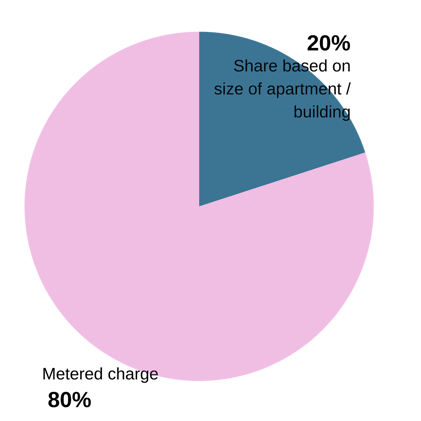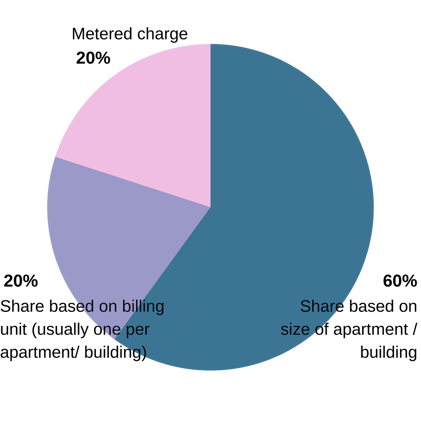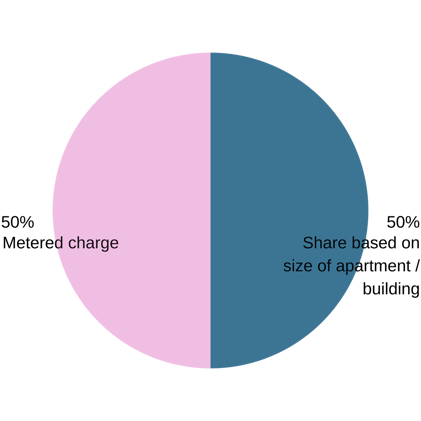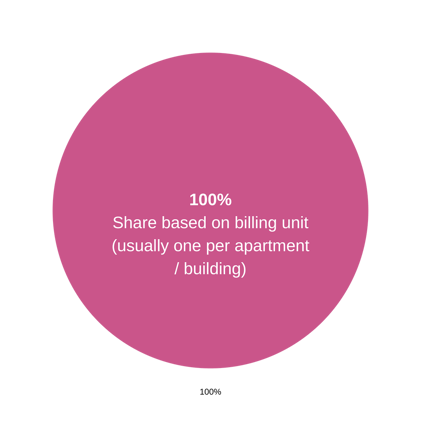Heat networks in the UK often struggle to recover the cost of consumer heating. Considering setting the tariff earlier in the project and with the resident in mind, can help keep costs low and fair.
The first thing to do is to ask, what the tariff is actually for? We believe that it is mainly to achieve three things:
- Recover costs; making sure that the operational and equipment costs are recovered (this is in everyone’s interest too!)
- Positively affect behavioural change; helping consumers use their heating in an effective, efficient way; which can make it cheaper for everyone
- A fair and transparent tariff; that ensures that every consumer group is not paying more than their fair share.
But, what does this look like?
Our basic principles are that:
- Consumers that use the system more, should pay more
- Everyone contributes towards the fixed costs regardless of how much they use it
By this, we mean to meter a scheme - charging consumers on their usage and not charging a flat rate. It should also be transparent so consumers know what to expect and understand that the tariff is fair.
Best practice and customer protection regulation
The CIBSE/ADE Code of Practice CP1 outlines within an objective that:
“Clear information shall be given to the customer with regards the tariff structure (including any options available), detailing the standing (fixed) and variable charges and all other elements of the bill (metering, routine maintenance, response service, VAT etc), how the charges have been derived and any assumptions used, in a transparent manner and in accordance with the Heat Trust Scheme and SI 2014 No.3120 (HM Government, 2014).”
But, what are the costs that need to be recovered?
- The cost to create the energy consumed: E.G. Costs of gas for the boilers and electricity for the pumps
- Maintenance costs
- CAPEX costs
- Operating costs
- Billing and administration costs
What are the tools you can use?
Metered charges - How much you use the system based on a price per kWh
Daily fixed charge based on the floor area- A daily fixed charge based on the floow area of the apartment
Daily fixed charge against each apartment or building
How do you allocate these costs fairly?
Here are our thoughts; but remember that, every scheme is different and you may have your own priorities over these:
Gas and electricity - the system uses gas and electricity even if the consumer does not use this

Maintenance costs - Maintenance costs exist regardless of usage, but a heavily used system will cost more to maintain

Capex costs - this is the cost of the equipment

Operational costs

Billing and administration - the cost is the same regardless of apartment size

More advanced tariffs that are not yet commonly used in the UK
Incentives
A very important tool for operators of large heat networks who need to run their systems efficiently to maximise network capacity is to incentivise efficient use of systems. The tariff would have an additional charge to incentivise low return temperatures. In the future this could be used in a domestic situation.
Efficient use of systems would be making sure heating systems in apartments and buildings are balanced and controlled appropriately to reduce return temperatures. The Code of Practice CP1 highlights this method as a best practice tool.
Time of the day or seasonal tariffs can be used to encourage users to move their usage from peak to off peak times.
Both of these measures bring down the costs of heating.
Key takeaways
- The tariff is one of your key touchpoints for the resident and should be considered very early in your process
- Is it just as important to get your tariff fair than the quality of heat
- Ensure that you cover all of your costs associated to keep the scheme financially viable



